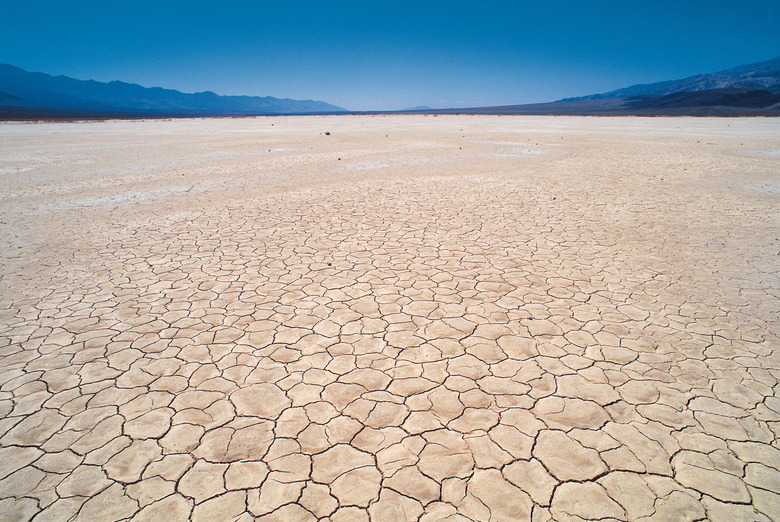Gobi Desert Ecosystem
Located in northern China, the Gobi Desert spans 1.2 million square kilometers (500,000 square miles), making it the fifth largest desert in the world. Though it has gaping temperature extremes and very little water, the Gobi Desert plays host to an ecosystem full of animals and plant life suited to live in such a harsh environment.
Climate and Weather
Climate and Weather
The Gobi Desert's climate is extremely arid as the average annual rainfall is only about 19 centimeters (7.6 inches), though there can also be a small addition of moisture by frost and snow during the winter months. Because the Gobi Desert is located so high above sea level — 1,524 meters (5,000 feet) at some points — the temperature changes can be extreme, ranging from 50 degrees Celsius (122 degrees Fahrenheit) in the summer and minus 40 degrees Celsius (and Fahrenheit) in the winter. The temperature can also swing as much as 33 degrees Celsius (60 degrees Fahrenheit) over the course of a single day.
Animals
Animals
Despite such extremes in temperature and precipitation amounts, animal life as large as camels and snow leopards inhabits the region. The desert is also home to small rodents, such as jerboas. Such small mammals serve as food for predators such as the golden eagle. The Gobi Desert is also the only place in the world to find the Gobi bear, an extremely endangered animal with an estimated 22 individuals left alive in the wild. There is also a very small human population, consisting of mostly nomadic groups of Mongolian descent.
Plants
Plants
The Gobi Desert is not home to many plants, but those that do survive are some of the hardiest in the world. There is the saxaul tree, which serves as a reservoir of water, making it one of the most important members of the ecosystem. There are also various types of shrubs and herbs, including the saltwort, which can survive in areas with ultra-high salt content. In addition, a species of wild onion is a main source of food for both animals and humans.
Geography
Geography
Unlike some deserts, the Gobi is not full of sand. Though there are some sand dunes, 95 percent of the desert is made of rocky terrain. It is considered a rain-shadow desert, with its moisture blocked by the Himalayas. But there are some rivers, such as the Yellow River, which provide some extra moisture. The desert is also still growing due to desertification through land mismanagement such as clear cutting of trees and overgrazing on grass lands, allowing the Gobi to creep further south and east toward Beijing.
Cite This Article
MLA
Michelle, Meg. "Gobi Desert Ecosystem" sciencing.com, https://www.sciencing.com/gobi-desert-ecosystem-23361/. 24 April 2017.
APA
Michelle, Meg. (2017, April 24). Gobi Desert Ecosystem. sciencing.com. Retrieved from https://www.sciencing.com/gobi-desert-ecosystem-23361/
Chicago
Michelle, Meg. Gobi Desert Ecosystem last modified August 30, 2022. https://www.sciencing.com/gobi-desert-ecosystem-23361/
